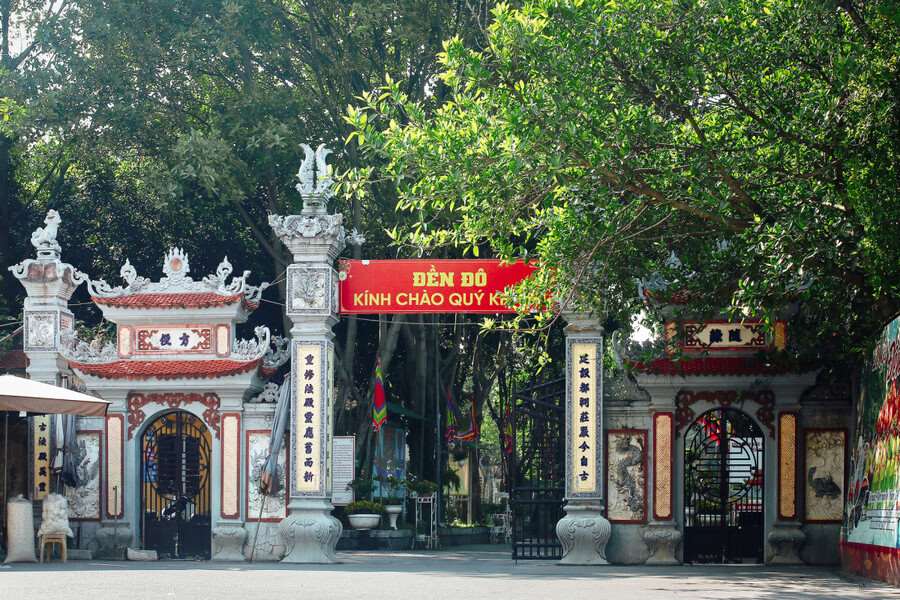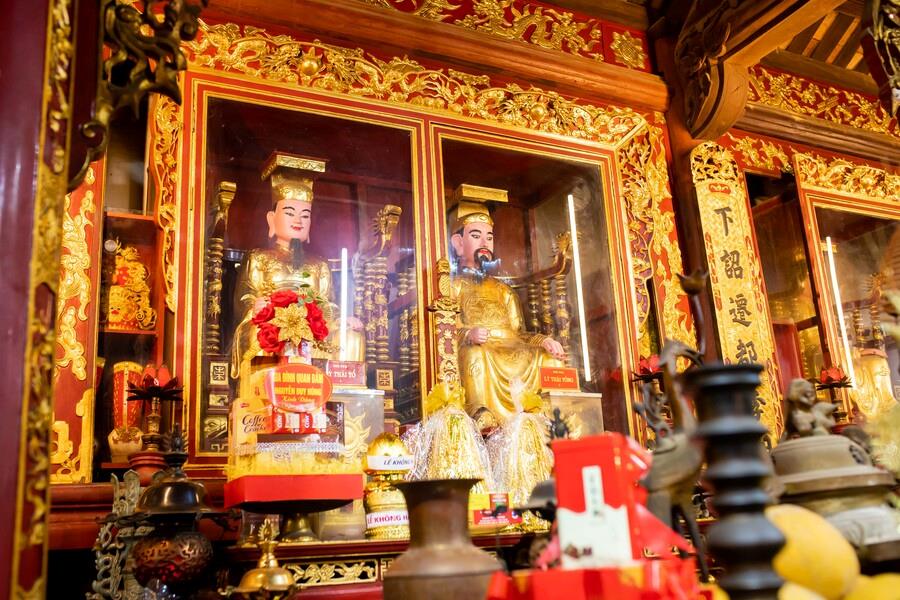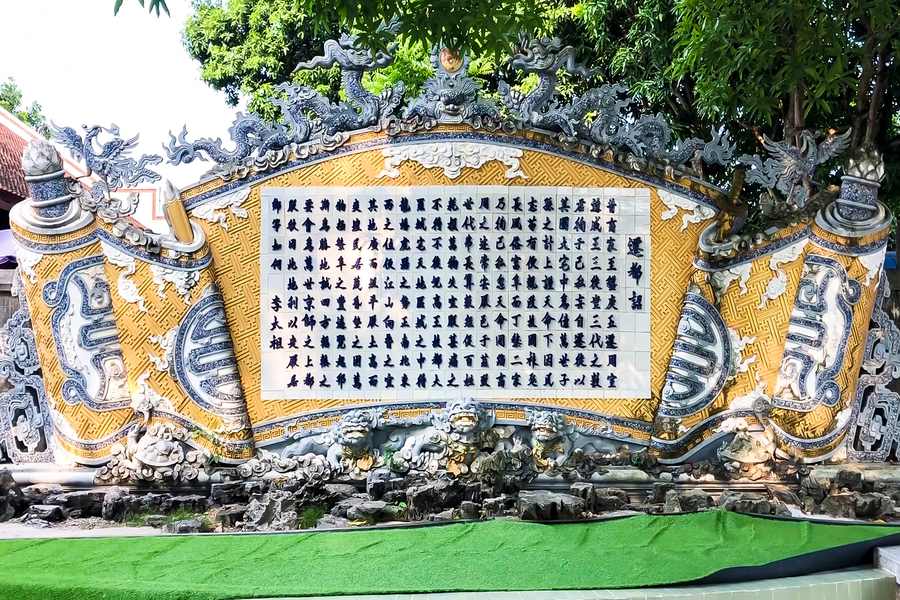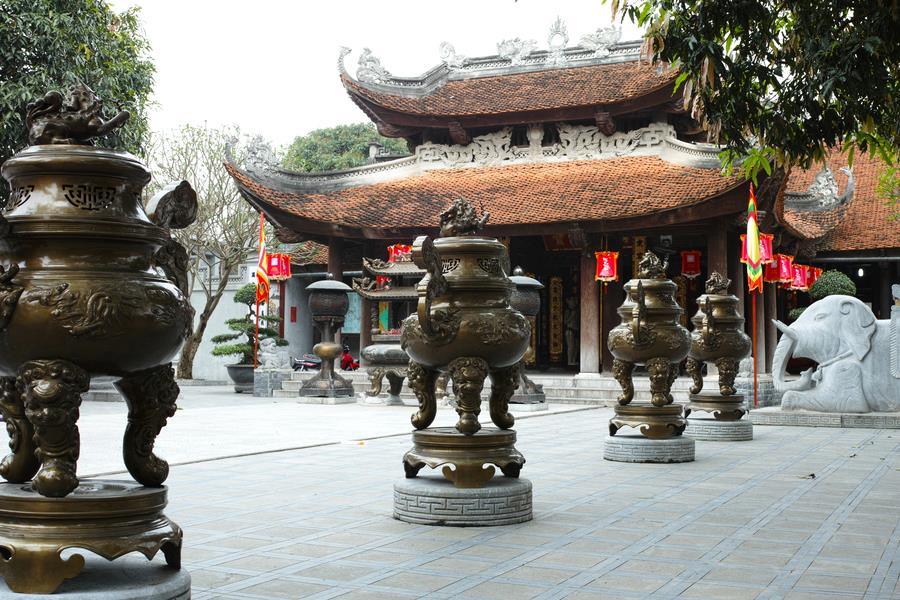Do Temple

Do Temple, also known as Ly Bat De Temple (Temple of Eight Ly Emperors), honors the Ly Dynasty's kings, particularly King Ly Cong Uan (Ly Thai To), the founder of the dynasty. In 2014, the temple along with the tombs of the Ly Dynasty Kings were ranked as Special National Relic.

The Entrance Gate of Do Temple
Do Temple with unique architecture has spiritual meaning and is where people come to pray for blessings. Today this is a famous place tourists can’t miss when coming to Bac Ninh. Let’s continue to see the artistic and historic value of Do Temple with Asia King Travel.
King Ly Thai Tong ordered to construction Do Temple to honor his father, King Ly Thai To. Since then, the temple has become a place of worship for the Ly Dynasty kings after they passed away. It was later renovated and expanded many times. The largest renovation was under King Le Kinh Tong in 1602, a stele was built to record the merits of the Ly Dynasty kings.

Statues of Emperor Ly Thai To and Ly Thai Tong in Do Temple
During the French Resistance War, the French destroyed many cultural heritage sites in northern Vietnam. In 1952, the French bombed and destroyed the relic heavily. In 1989, it was rebuilt according to the exact architecture that researchers had sketched out, based on the remaining vestiges and archival documents.
The temple worships eight kings of the Ly Dynasty, which are:
The ninth also the last and only Queen, Ly Chieu Hoang was not enshrined in the Temple. Historians believe that she has lost the Ly Dynasty’s throne to the Tran Dynasty, it was a sin to the lineage. One more thing to be considered is in a gender-prejudiced society, a female ruler was not worthy to be enshrined alongside her male predecessors.
Do Temple is situated in Dinh Bang Village, Tu Son City, Bac Ninh Province, Vietnam. The temple is only about 20 kilometers from the Hanoi Old Quarter. If you are planning a trip to Hanoi, you can easily add a visit to the Do Temple to your itinerary.
The route to Do Temple is also very convenient. From Chuong Duong Bridge, you just have to straight forward to Tu Son City. When on Tran Phu Street, turn right onto Ly Thai To Street and you arrive at the destination.
Suggested for you: Vietnam Excursions
Do Temple is open all year round, so you can visit anytime during open hours. Anyways, the best time to visit is from the 14th to 16th days of the third lunar month each year. Do Temple Festival is held during this time to celebrate the coronation of King Ly Thai To. You will witness exceptional artistic performances at the Festival.

Do Temple Festival. Source: VOV
Before reaching the main gate of the inner citadel, visitors will see the “Edict on the Transfer of the Capital Decree”. This 3.5-meter-high and 8-meter-wide scroll is made of Bat Trang pottery and transcribes King Ly Thai To's edict. The scroll consists of 214 characters in blue on a white background, corresponding to the 214 years of the reign of the eight kings.

The stone stele of the edict written by King Ly Thai To
The main gate leading into the inner citadel is the Five Dragons Gate, features five stone dragon statues carved on the step. The two central dragon statues are elaborately sculpted with pearls in their mouths. Whenever this gate opens, it looks like dragons soaring into the sky.

Stone-carved dragons in front of the gate
The Inner Citadel is also the center of the site covering an area of over 4,000 square meters. Behind the inner citadel is the rear palace displays the throne, tablets, and statues of eight Ly Kings. On both sides of the rear palace are the shrines of the most prominent civil and military officials throughout the 216 years of the Ly dynasty.

The Dragon Yard inside Inner Citadel
Facing the Inner Citadel is the Water Temple, built on a crescent-shaped lake and connected to the Five Dragon Gate Square by a stone bridge. It was constructed with five rooms wide with eight roofs, all curved with graceful lines and carved with intricate patterns. In the past, when the kings returned to their homeland, they would often stay there to listen to Quan Ho singing and watch water puppets.

Water Temple under sunshine
If you're planning a visit to Do Temple, keep in mind that it's generally open to the public daily from 7 am to 6 pm. There's no entrance fee to explore this historic site. Remember that Do Temple is a place of worship, so dressing modestly with shoulders and knees covered is appreciated. To ensure a peaceful atmosphere for everyone, please maintain a respectful silence while visiting..
Do Temple bear the distinct historical and cultural values of the Ly Dynasty. Visitors can immerse themselves in the glorious history of the Vietnamese people. Contact us now to admire the spiritual energy of heaven and earth converges.
Suggested for you: Vietnam Tours 7 Days